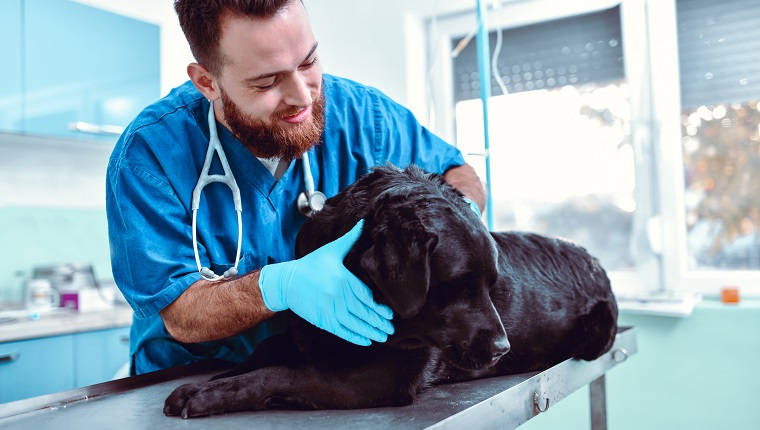
Spotting a tick on your pup is quite threatening as ticks carry so many diseases, some serious and transmissible to humans.
Anaplasmosis in dogs is a lesser-known tick-borne disease that can affect the pet and the owner significantly. It is prevalent throughout the world and requires timely diagnosis and treatment to avoid further implications.

In this post, let us try to learn more about Anaplasmosis in dogs and see how it can be treated naturally.
Natural Treatment For Anaplasmosis In Dogs – A Complete Guide
Dogs catch ticks from the environment and other animals and end up getting affected with mild to serious tick-borne diseases including anaplasmosis.
This disease shows symptoms in 1-2 weeks of tick transmission or bite. Symptoms of the disease vary depending on the organism affecting the pet, often making it difficult to diagnose.
The most commonly reported symptoms include;
- lethargy
- fever
- joint pain and lameness
- loss of appetite.
While different vets recommend varying treatment methods upon the diagnosis of the disease, it is better to approach it through a holistic, natural treatment. There are several herb-based antimicrobial products available for pets that seem to work for anaplasmosis.
You can consider giving your pup some immunity-boosting herbs like cat’s claw and echinacea along with oregano, thyme, and other herbs known for their antimicrobial properties.
A powerful blend of herbs would support the pet’s immune system and boost the production of white blood cells to fight the symptoms and even work against bacteria to help recover faster.
A natural treatment is recommended for a dog suffering from anaplasmosis if the situation is not life-threatening. Antibiotics can be used in a later stage when natural methods don’t give the desired results.
Holistic Treatment For Anaplasmosis In Dogs – What You Should Know?
The conventional treatment of anaplasmosis comprises antibiotics like doxycycline given for 30 days to resolve the symptoms and improve the dog’s condition. However, the use of such antibiotics has several concerns.
They are broad-spectrum and work against a range of bacteria including the good bacteria in the pet’s intestinal tract. Destroying the intestine’s ecology with the long-term use of such powerful medicines can result in problems like urinary tract infection, IBD, overgrowth of candida, and others.

Holistic treatment for the disease can help the dog fight anaplasmosis by itself. When the blood test shows the antibodies for the disease, it indicates that the pet’s immune system is responding to the infection. It is recommended that you keep an eye on the animal to see how the symptoms improve.
Antibiotics should be used only if absolutely necessary and not out of fear. Most symptoms can be left treated for a while to let the pet’s body resolve them on its own.
Pay attention to your pet’s diet and activity to make sure it stays healthy, active, and strong. You can consider including some beneficial herbs and supplements in its everyday diet to keep it protected against such infections.
The use of tick repellents like Tickweed and rose geranium oil would help remove ticks and the bacteria they carry. Also, make sure you give your pet a thorough bath in a tub of water to wash away ticks from its body.
Long Term Effects of Anaplasmosis
When a dog is initially infected with the tick-borne disease, it is called the acute phase where you might notice negligible to mild symptoms that may go unnoticed.
These symptoms often resemble the effects of other diseases, making it hard to diagnose the condition on time. A pet can sometimes experience a longer-term, less obvious version of the disease and suffer from chronic anaplasmosis that affects the pet’s overall health and quality of life.
Dogs infected with anaplasmosis generally show joint pain and limping. Some pets may even display lameness and limited mobility that last longer than usual.
Though not so common, they can also suffer from gastrointestinal symptoms such as diarrhoea and vomiting as well as respiratory problems like sneezing and coughing and even the signs of meningitis if the bacteria infect the nervous system.
In a few serious cases, the pet can suffer from severe respiratory problems or organ failure which can prove to be fatal. Though anaplasmosis is not a life-threatening condition, it can result in devastating long-term effects if left untreated for a long time.
It is best to diagnose the disease on time and adopt a holistic treatment plan. If symptoms don’t resolve in a few days, your vet may recommend more effective medication and other treatment methods that should help avoid any severity.
Is Anaplasmosis In Dogs Fatal
Dogs affected by anaplasmosis generally show symptoms for 1-7 days though some pets may have minor or no symptoms at all. Once the treatment is started, most symptoms resolve in about 2-3 days. The vet may recommend completing the course of treatment even after symptoms improve.
If you find a tick on your dog or notice any of the symptoms of anaplasmosis, it is best to take the pup to a vet immediately. As the symptoms resemble other diseases, it can be difficult to rule out the conditions by yourself.
The vet examines the pet and performs necessary tests to confirm the infection and suggest the right treatment method for a timely recovery.
If left untreated, anaplasmosis can result in a number of serious health complications for the dog including:
- respiratory failure
- bleeding
- organ failure
It can even be fatal in some serious cases of organ failure or excessive bleeding. Though not always fatal, anaplasmosis should be diagnosed and treated on time to avoid any health risks.
Final Thoughts
Though anaplasmosis doesn’t concern pet owners as much as other tick-borne diseases, it is a critical canine disease that affects a large number of animals across the country every year.
A holistic approach to the disease should help prevent ticks and infection to keep the pet safe. However, if you think your pup has been exposed to such a tick-borne disease, it is best to consult a vet and diagnose the condition at the earliest for timely treatment.
When To Euthanize A Horse With Cushing’s Disease? UPDATED 2022 #2
Knowing when to euthanize horses can be a …
When To Euthanize A Horse With Cushing’s Disease? UPDATED 2022
Knowing when to euthanize horses can be a …
Feeding Alfalfa Pellets Instead of Grain – A Complete Guide
Horse owners have different opinions when it comes …
L Glutamine For Dogs – UPDATED 2022 – A Complete Guide
Digestive problems are quite common in dogs and …
L Glutamine For Dogs – UPDATED 2022 – A Complete Guide
Digestive problems are quite common in dogs and …
Blind Dog Walking In Circles? UPDATED 2022 – A Complete Guide
As a dog owner, you always keep a …
Laryngeal Paralysis In Dogs – When To Euthanize?
The toughest decision for a pet owner is …
Natural Treatment For Anaplasmosis In Dogs – UPDATED 2022
Spotting a tick on your pup is quite …
Does My Dog Have Dementia? – Quiz & Canine Dementia Scale
Dogs have so many resemblances with humans; one …
PLN In Dogs – A Complete Guide To Protein Losing Nephropathy In Dogs
Just like humans, dogs suffer from damage and …







